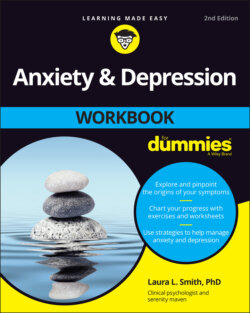Читать книгу Anxiety and Depression Workbook For Dummies - Laura L. Smith - Страница 11
Emotions of Anxiety and Depression
ОглавлениеEmotions erupt in response to what happens in the present, what happened in the past, and what might happen in the future. Emotional reactions involve physiological, cognitive, and behavioral responses. People across the world express six primary emotions:
Happiness
Sadness
Anger
Fear
Disgust
Surprise
From those basic emotions, more subtle expressions emerge. For example, from happiness springs joy, contentment, cheerfulness, or pleasure. From sadness, depression, gloom, despair, despondency, low self-esteem, or shame occur. Fear may bring anxiety, terror, worry, embarrassment, or panic. Disgust usually leads to distaste or feelings of grossness. Surprise is a brief emotion. What follows surprise varies depending on what brought forth the initial response. Surprise may turn into curiosity, amusement, disgust, relief, or fear.
Emotions guide behavior. Fear increases alertness and avoidance, anger produces aggression, and sadness involves withdrawal. Although most people have a variety of emotional experiences, those with anxiety or depression are likely to experience more sadness and fear, or possibly anger and disgust.
Which primary emotions do you experience the most frequently? Think about a typical day and reflect on what you’re feeling. Think about what happened just before your feeling. Were you thinking about the past or the future? Record your experience in Worksheet 1-7.
Worksheet 1-7 My Reflections
